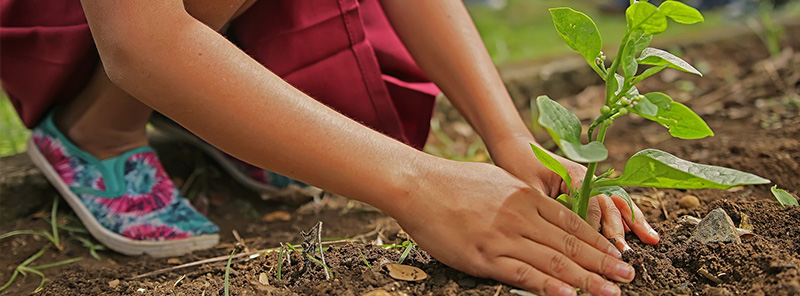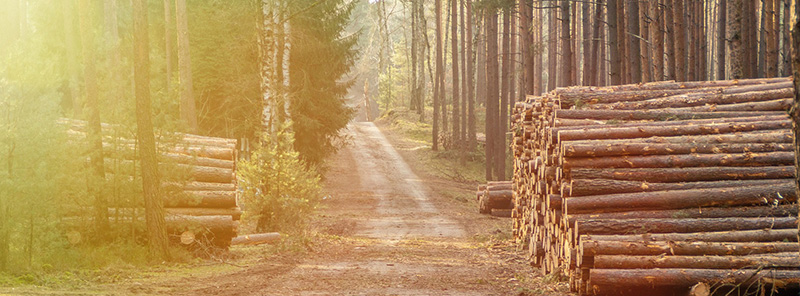
Printing versus ecology
Many would see the tackling of this particular subject by a company from the printing industry as a risky move. However, when faced with the impending climate crisis, we should be able to make informed decisions both as consumers and investors. Are paper books as harmful to the environment as many are determined to prove? Be warned, this is a complex subject. Try as you might, you can’t approach it without stumbling upon an intricate web of interdependent relationships. Perspective is needed, otherwise you won’t see the forest for the trees (pun indeed intended), so perhaps we could try and debunk some myths and dispel the reputation clinging to traditional books.
No time to grieve for books when the forests are ablaze?
Paper is made of wood, wood is sourced from trees, and so to make a book, a tree has to be cut down. It’s hard to argue with that logic, this is just the way it is. Which is where it gets a bit tricky as frequently the next assumption is that “forests are being cut down to satisfy the needs of the book publishing market”. The image that immediately comes to mind is a scene from “Day of the Wacko” in which the main character—while getting rid of all the supplements from his daily paper—pictures the forests being felled and says with a heavy heart: “With each one of these supplements out I bleed their resin”. Adaś Miauczyński would be able to sleep more peacefully if only he knew that this was not exactly the case with the forests.
First of all, we have to introduce the notion of commercial forests, i.e. ones “in which sustainable forest management is carried out, consisting in afforestation, conservation, sourcing of wood and restoration. The objective is to establish favourable economic relations, while adhering to the principle of forest sustainability and biodiversity” (source: https://www.encyklopedialesna.pl/haslo/lasy-gospodarcze/). Thus we don’t have to worry that a valuable ecosystem will be wiped off the face of the earth as a result of a new bestseller appearing on the market.
Another issue is to establish what trees are cut down. The wood that finds its way to the paper mills comes from the so-called maintenance felling. This means that some trees are cut down to benefit the entire forest, e.g. young plants are removed to give the remaining ones space to grow. Let figures be the key proof that books are not harmful to forests. In Poland, forests continue to be on the up: forest coverage after the Second World War was 20.8%, to gradually increase to 29.6% last year.
Between 2005 and 2015, the forest area in Europe increased by 44 000 square kilometres. However, it is only fair to admit that while the situation in Europe and the United States is encouraging, it is not as rosy elsewhere. The problem here is the unrestrained felling of equatorial forests, where the lack of sustainable forest management means that paper in Asia, South America and Africa is produced from trees sourced from primeval forests.
Certyfikat FSC®
So, how can we be sure that the paper we use comes from responsibly managed forests? Let’s look for an FSC® certificate awarded to, amongst others, businesses in the wood, paper, printing and publishing industries, as well as forest owners and managers. The certificate provides assurance that the consumer gets a product manufactured at every stage in a responsible manner. This way we can be certain that, to start with, the wood comes from legal sources, the felling does not pose a threat to the specific conservation values of the forest, the negative impact on the environment will be limited, and any possible damage to the ecosystem will be remedied as far as possible.
The certificate provides additional assurance that the product was manufactured in a way that recognizes and respects human and traditional rights. More information can be found at https://www.fsc.org/en. The certificate is awarded by an independent international non-profit organization. And our printing house is proud to have been awarded it.
Are eBooks eco-friendly?
The conventional wisdom is that eBooks are more environmentally friendly. At the end of the day, in order to produce paper, you need more than just wood. Paper mills use vast amounts of water and chemical substances, while eBooks are not actual physical objects—all they are is essentially an environmentally neutral cluster of data. However, this is only a half-truth as an eBook itself is of no value to the consumer until the data is read using a data reader. Which is why the actual confrontation should take place between a book and a data reader as opposed to a book and an eBook. It suddenly becomes much harder to decide which party is the winning one. After all, the manufacture of electronic devices usually takes place on a different continent, so—in addition to the energy consumed in the manufacturing process of the device itself—we also have to bear in mind the carbon footprint created as a result of transporting it to the country in which it is to be distributed. And let’s not forget that once printed, a book no longer consumes energy. You don’t have to charge or repair it, or replace batteries. Besides, there is no need to replace it with a later model. It is difficult to compare the lifespan of a book with that of a data reader: the latter is no longer fit for use after only a few years. And there is of course one more issue: paper is a resource that is both renewable and biodegradable. At the end of the life cycle of a data reader, it simply becomes electronic waste that should be disposed of appropriately. However, experience shows that data readers usually end up at landfills instead of the designated waste disposal facilities. As you can see, the solutions presented as less harmful to the environment are not always as environmentally friendly as it seems.
What about books printed on recycled paper?
Recycled paper? Of course! It’s just that it’s not necessarily suitable for the printing of books. The quality of paper fibres decrease with each cycle of processing, and thus they are not suitable for the production of high-quality paper. This type of paper is ideal for manufacture of packaging and printing of newspapers. And let’s not forget that we cannot process paper indefinitely. The addition of fresh fibres is frequently required to produce recycled paper.

We do all that we can to be more environmentally friendly.
We take all possible steps that can bring in measurable benefits for the environment—from serious undertakings through to small gestures. The greatest challenge is to optimise consumption of energy. Given the size of our machinery stock, it is quite a task. Firstly, we invest in modern equipment that works consuming less energy than alternative systems of the same class. Secondly, we recover energy during the work of some of our machines (e.g. Müller Martini Diamant 35 MC and air compressors). We use environmentally friendly supplies in our manufacturing processes, e.g. paints, inks. We use certified raw materials that provide assurance of sustainable forest management. Additionally, we have been awarded the FSC® certificate referred to earlier.
And what about paper?
Paper waste cannot be entirely eliminated, however thanks to our responsibly managed manufacturing processes, it has been significantly reduced. All waste is collected as scrap paper, and subsequently subjected to recycling. Our activities in this regard go beyond manufacturing, and we strive to promote nature conservation and preservation ideas throughout the company. We reduce the amount of waste we create and sort it. Our most recent environmentally friendly project that we can boast of with great satisfaction is the fact that we no longer use bottled water. We have installed carbon filters on our taps and provided our staff with reusable metal water bottles. Seeing that tap water is what we nowadays drink at our printing house, we managed to pretty much successfully cope with the problem of plastic bottles. Initially, the idea of drinking tap water was met with a dose of scepticism by many of our employees. Over time, however, the suspicion has disappeared, and today it seems that everyone sees the benefits of drinking tap water, while at the same time recognizing the savings that this solution brings for nature.

The printing industry is not as black as it is painted
Reading the above text, you could be excused for coming to the conclusion that all is well. However, there is still quite a lot of work that has to be done as regards ecology. The first steps have already been taken, but we still have a long way to go. Is it worth it? Of course it is! It’s a worthwhile goal. After all, as Antoine de Saint-Exupéry once said: “We do not inherit the earth from our fathers; we borrow it from our children”. We should do everything to leave it in the best condition possible.
